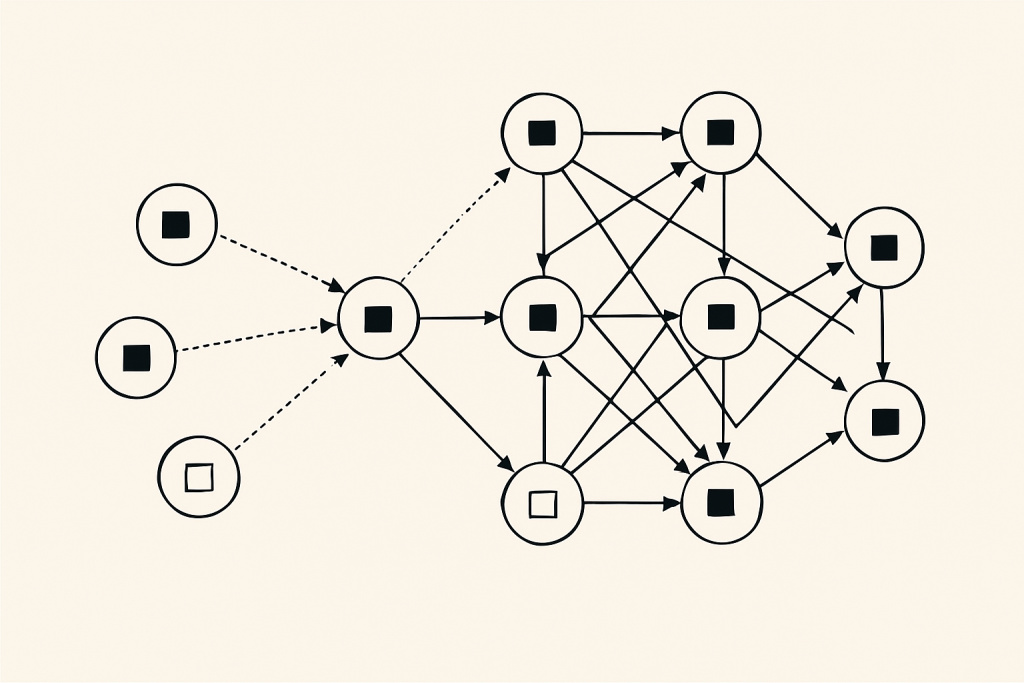
Imagine you’re working on a group project. Everyone promises to do their part, but you’ve been burned before—someone slacks off, and suddenly you’re carrying the whole load. Still, once in a while, you meet someone who matches your effort. You help them, and they help you; suddenly, the whole project feels smoother, even fun. That simple loop—I help you, you help me—is more potent than it looks. According to Axelrod and Hamilton, cooperation can flourish even in a world where everyone is trying to get ahead, as long as the same individuals meet repeatedly. They compare this to a game where you choose between helping (cooperating) or taking advantage (defecting). A strategy called “tit for tat”—start by cooperating, then copy whatever the other person did last time—turned out surprisingly effective in their simulations. It wasn’t fancy; it was just friendly, firm, and forgiving, and that was enough to thrive among many different types of players.
Think of a simple example: two students who see each other daily at school. If one person helps another with notes today, the other is more likely to return the favor tomorrow. But if someone takes advantage—say, copying homework and giving nothing back—they’ll quickly face the consequences when the other person withdraws support. Axelrod and Hamilton demonstrate that cooperation is most effective when future interactions are likely. The more you expect to see someone again—friends, classmates, teammates—the more valuable it becomes to treat them fairly. It’s the same reason long-term friendships or stable online communities tend to be kinder: people know their actions will come back to them.
Authors also explain that cooperation often begins within small groups. Even if most people around you act selfishly, a tight-knit circle that consistently helps each other can influence the wider environment. This is why friend groups, clubs, or study teams can create pockets of trust even in competitive settings. Over time, the benefits of mutual support become evident, encouraging more cooperation. Recognizing one another also plays a key role-just as animals rely on scent or territory, humans use faces, names, and digital identities. Once you know who treated you well, you can return kindness to the right person—and avoid rewarding those who didn’t.
In everyday life, this theory encourages long-term thinking and planning by showing how cooperation builds lasting relationships. A small act of generosity can initiate a chain of positive responses, while taking advantage of someone might lead to a quick gain but can damage future opportunities. The work of Axelrod and Hamilton reminds us that cooperation is not naïve; it’s strategic. Being helpful, responding firmly to unfairness, and being willing to forgive are not just moral choices; they are effective ways to strengthen bonds over time. Whether you are working on school projects, dealing with roommates, or navigating social circles, choosing to cooperate first—and maintaining a fair approach afterward—can make life smoother, more productive, and much more satisfying.
Reference:
Axelrod, R., & Hamilton, W. D. (1981). The Evolution of Cooperation. Science, 211(4489), 1390–1396. https://doi.org/10.1126/science.7466396
Privacy Notice & Disclaimer:
This blog provides simplified educational science content, created with the assistance of both humans and AI. It may omit technical details, is provided “as is,” and does not collect personal data beyond basic anonymous analytics. For full details, please see our Privacy Notice and Disclaimer. Read About This Blog & Attribution Note for AI-Generated Content to know more about this blog project.



